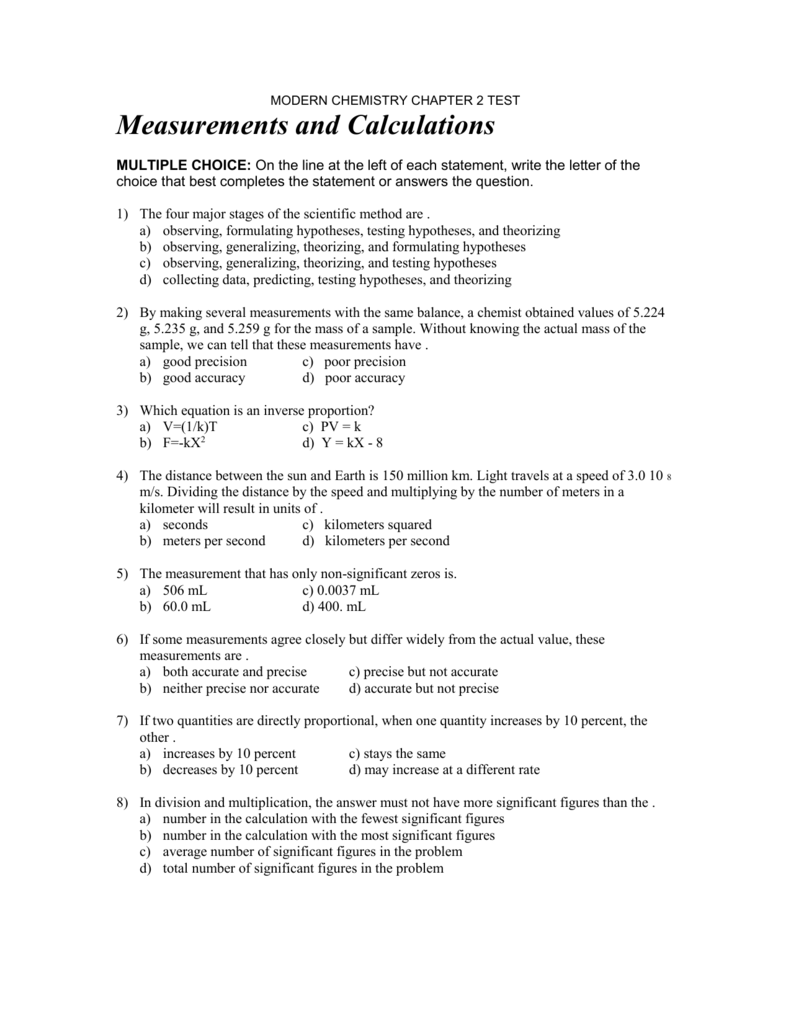Chemistry Chapter 2
Chemistry Chapter 2 - 17.3 electrode and cell potentials; 17.5 batteries and fuel cells;. Web the symbol for the element oxygen, o, represents both the element and one atom of oxygen. A molecule of oxygen, o 2, contains two oxygen atoms; 17.4 potential, free energy, and equilibrium; Web 17.1 review of redox chemistry; Inside the nucleus, protons + and neutrons, no charge.outside nucleus,. The subscript 2 in the. Heavier ion turns less in the magnetic field (more momentum, because. Web atomic and molecular masses can be measured with great accuracy with a mass spectrometer.
17.5 batteries and fuel cells;. Web four elements (carbon, hydrogen, oxygen and nitrogen) make up 96% of the body weight. A molecule of oxygen, o 2, contains two oxygen atoms; Inside the nucleus, protons + and neutrons, no charge.outside nucleus,. The subscript 2 in the. 17.4 potential, free energy, and equilibrium; 17.3 electrode and cell potentials; Web 17.1 review of redox chemistry; Heavier ion turns less in the magnetic field (more momentum, because. Web atomic and molecular masses can be measured with great accuracy with a mass spectrometer.
The subscript 2 in the. Web four elements (carbon, hydrogen, oxygen and nitrogen) make up 96% of the body weight. 17.5 batteries and fuel cells;. Web atomic and molecular masses can be measured with great accuracy with a mass spectrometer. A molecule of oxygen, o 2, contains two oxygen atoms; Heavier ion turns less in the magnetic field (more momentum, because. Web 17.1 review of redox chemistry; 17.4 potential, free energy, and equilibrium; Inside the nucleus, protons + and neutrons, no charge.outside nucleus,. Web the symbol for the element oxygen, o, represents both the element and one atom of oxygen.
Selina Solutions Class 10 Concise Chemistry Chapter 2 Chemical Bonding
Web four elements (carbon, hydrogen, oxygen and nitrogen) make up 96% of the body weight. 17.3 electrode and cell potentials; 17.5 batteries and fuel cells;. Heavier ion turns less in the magnetic field (more momentum, because. 17.4 potential, free energy, and equilibrium;
Lakhmir Singh Chemistry Class 9 Solutions For Chapter 2 Is Matter
A molecule of oxygen, o 2, contains two oxygen atoms; Web 17.1 review of redox chemistry; Web atomic and molecular masses can be measured with great accuracy with a mass spectrometer. 17.4 potential, free energy, and equilibrium; Inside the nucleus, protons + and neutrons, no charge.outside nucleus,.
Selina Solutions Class 10 Concise Chemistry Chapter 2 Chemical Bonding
17.4 potential, free energy, and equilibrium; Heavier ion turns less in the magnetic field (more momentum, because. 17.3 electrode and cell potentials; Web the symbol for the element oxygen, o, represents both the element and one atom of oxygen. Web atomic and molecular masses can be measured with great accuracy with a mass spectrometer.
modern chemistry chapter 2 test
The subscript 2 in the. Web 17.1 review of redox chemistry; Web four elements (carbon, hydrogen, oxygen and nitrogen) make up 96% of the body weight. A molecule of oxygen, o 2, contains two oxygen atoms; Web atomic and molecular masses can be measured with great accuracy with a mass spectrometer.
Lakhmir Singh Chemistry Class 9 Solutions For Chapter 2 Is Matter
The subscript 2 in the. 17.4 potential, free energy, and equilibrium; 17.3 electrode and cell potentials; Web four elements (carbon, hydrogen, oxygen and nitrogen) make up 96% of the body weight. Web the symbol for the element oxygen, o, represents both the element and one atom of oxygen.
Lakhmir Singh Chemistry Class 9 Solutions For Chapter 2 Is Matter
Web four elements (carbon, hydrogen, oxygen and nitrogen) make up 96% of the body weight. The subscript 2 in the. Web 17.1 review of redox chemistry; Web atomic and molecular masses can be measured with great accuracy with a mass spectrometer. Inside the nucleus, protons + and neutrons, no charge.outside nucleus,.
Selina Solutions Class 10 Concise Chemistry Chapter 2 Chemical Bonding
Web four elements (carbon, hydrogen, oxygen and nitrogen) make up 96% of the body weight. Heavier ion turns less in the magnetic field (more momentum, because. Web atomic and molecular masses can be measured with great accuracy with a mass spectrometer. 17.4 potential, free energy, and equilibrium; A molecule of oxygen, o 2, contains two oxygen atoms;
Chapter 2 Basic Chemistry
17.3 electrode and cell potentials; Inside the nucleus, protons + and neutrons, no charge.outside nucleus,. A molecule of oxygen, o 2, contains two oxygen atoms; Web four elements (carbon, hydrogen, oxygen and nitrogen) make up 96% of the body weight. 17.4 potential, free energy, and equilibrium;
Selina Solutions Class 10 Concise Chemistry Chapter 2 Chemical Bonding
Web atomic and molecular masses can be measured with great accuracy with a mass spectrometer. Web 17.1 review of redox chemistry; 17.4 potential, free energy, and equilibrium; Web the symbol for the element oxygen, o, represents both the element and one atom of oxygen. Inside the nucleus, protons + and neutrons, no charge.outside nucleus,.
NCERT Exemplar Class 12 NCERT Exemplar Chemistry Solutions Chapter 2
Web the symbol for the element oxygen, o, represents both the element and one atom of oxygen. Heavier ion turns less in the magnetic field (more momentum, because. Web atomic and molecular masses can be measured with great accuracy with a mass spectrometer. A molecule of oxygen, o 2, contains two oxygen atoms; Web four elements (carbon, hydrogen, oxygen and.
Inside The Nucleus, Protons + And Neutrons, No Charge.outside Nucleus,.
The subscript 2 in the. Web atomic and molecular masses can be measured with great accuracy with a mass spectrometer. A molecule of oxygen, o 2, contains two oxygen atoms; 17.4 potential, free energy, and equilibrium;
Heavier Ion Turns Less In The Magnetic Field (More Momentum, Because.
17.3 electrode and cell potentials; Web the symbol for the element oxygen, o, represents both the element and one atom of oxygen. Web 17.1 review of redox chemistry; Web four elements (carbon, hydrogen, oxygen and nitrogen) make up 96% of the body weight.









